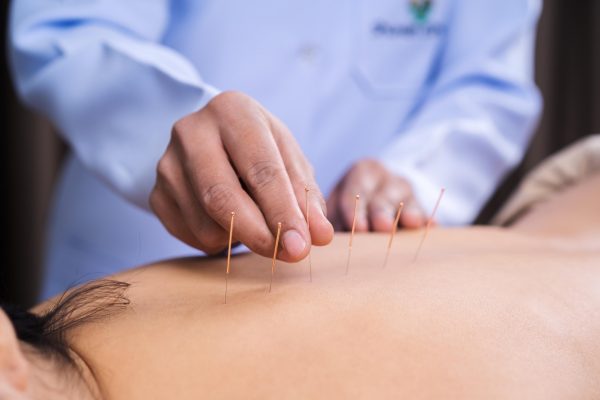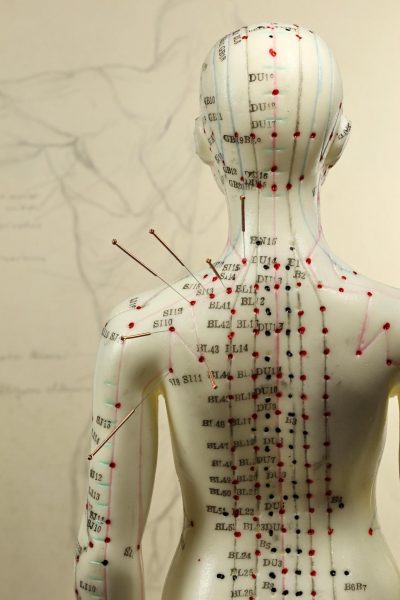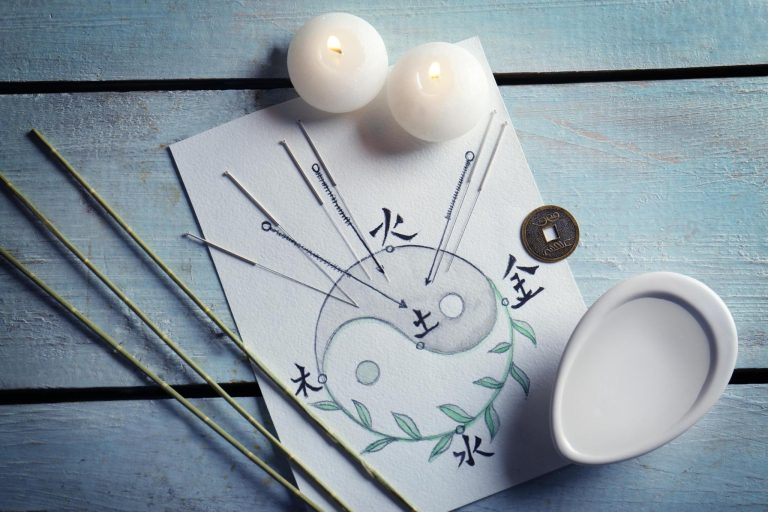The spread of acupuncture into Western medicine has been spectacular but relatively recent. The first acupuncture school opened in the US in 1975; by 2018, there were nearly 40,000 licensed acupuncturists in this country. One of the attractions of acupuncture in the modern Western world is its long history, in contrast to the brief dominance of Big Pharma’s pills and tablets. But few people appreciate just how long that history is.
Acupuncture emerges in 2500 B.C. from ancient clouds of myth and legend. In myth, Shennong, one of the three original deities, taught the Chinese many useful arts including acupuncture and moxibustion (heat therapy). According to legend, a soldier fighting on the Mongolian front was struck by an arrow, which did not kill him, but cured his chronic illness.
Acupuncture, as we know it, developed over several centuries and gradually became a standard therapy in China. It complements and supports other components of Traditional Chinese Medicine: use of herbs, massage, diet, tai chi, and moxibustion. Classical acupuncture is the insertion of fine needles through the skin at specific points along imaginary lines drawn on the body (meridians) to allow the free flow of the vital life force, qi.
One of the earliest books mentioning acupuncture is the Huangdi Neijing (黃帝內經), the Yellow Emperor’s Canon of Internal Alchemy. This book was probably written in the first or second centuries B.C. but codifies much earlier traditions. In it, the emperor asks questions that are answered by his ministers. One of the ministers explains, “On these meridians there are 365 acupuncture points, one for each day of the year.” The word translated as channels is mai; but this word can also mean vessel, meridian, or circulation tract. This reference is considered the first description of acupuncture meridians. The Huangdi neijing describes metal needles, “as fine as autumn hair,” round sharp needles, and nine sets of needles each correlated with different body parts.
READ MORE:
- Ancient Chinese Pest Control – Without Insecticides
- Benefits of Sitting and Meditation in the Lotus Position

Success
You are now signed up for our newsletter
Success
Check your email to complete sign up
But the concept of puncturing the skin to improve health existed in China long before the invention of metal to make actual needles; instead, practitioners used sharpened stones called bian stones.
The first written reports of treatment by acupuncture were found in tombs dating from the second century B.C. One manuscript, called Maishu, describes how to pierce the body to normalize the flow of qi, that is, how to perform acupuncture.
By 260 A.D., acupuncture treatment was so well established that a classic textbook, Zhenjiu jiayi jing (針灸甲乙經), The Numbered Book on Acupuncture and Moxibustion, could be published. It was used and updated for nearly 1,000 years.

By the end of the first millennium, acupuncture has become so popularized that untrained men were selling incompetent services. The emperor decreed that acupuncturists must be licensed and instituted an ingenious examination. In 1026 Wang Weiyi, a chief royal medical officer, compiled New Standard Acupuncture Points Diagrams, and had two life-sized bronze statues engraved with the acupuncture points. For the exam the statues were coated with wax and filled with water. The student was given the number of an acupuncture point. If he inserted his needle in the correct spot, it would go through the wax then into the hole in the statue and release a drop of water. With five correct insertions, the student earned his license.
Acupuncture continued to flourish in China, and spread to Japan and Vietnam. During the Ming Dynasty (1368–1644), Yang Jizhou published Zhen Jiu Dà Chéng (鍼灸大成), The Great Compendium of Acupuncture and Moxibustion. This book provides a basis for modern acupuncture practice and is still in print.
Classical acupuncture has been practiced for more than 2,000 years and in other forms for even longer. In the U.S., where history is measured in centuries rather than in millennia, the “East” retains an allure as a home of ancient wisdom and secret knowledge. And indeed, the long history of acupuncture illustrates how China has preserved and used the learning and experience of its past to the present day.
With reporting by Janet Wiener, PhD












